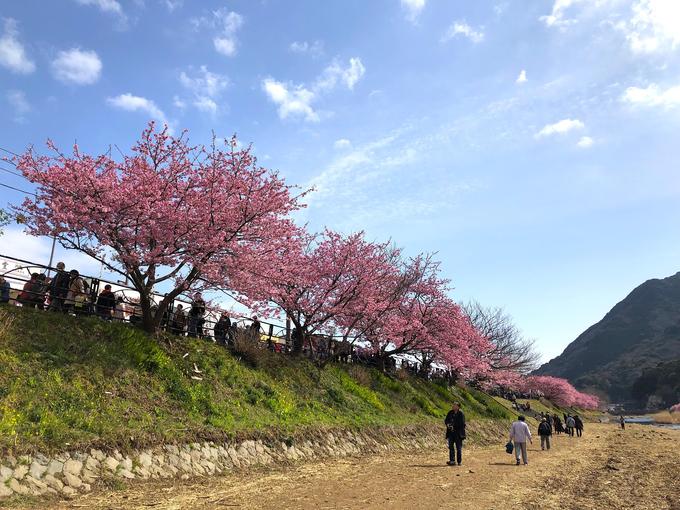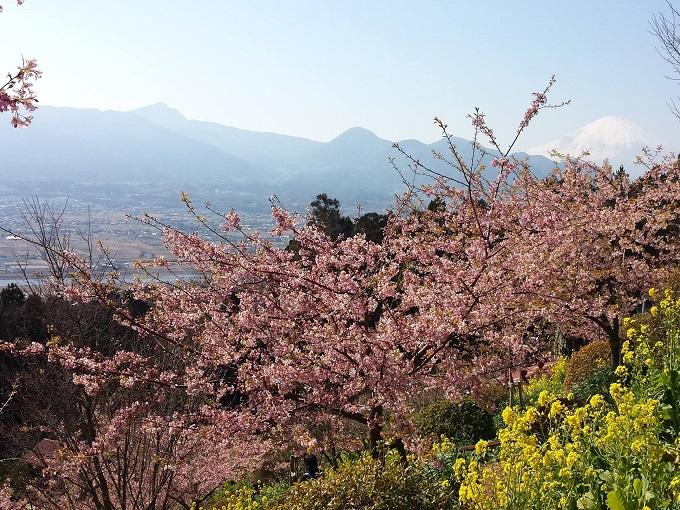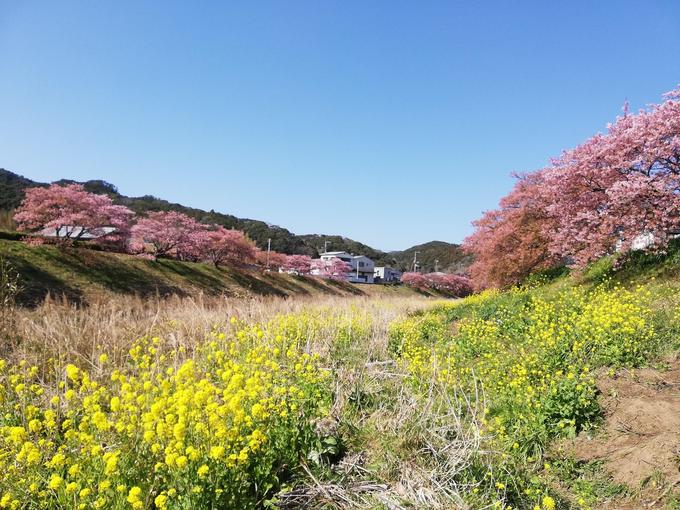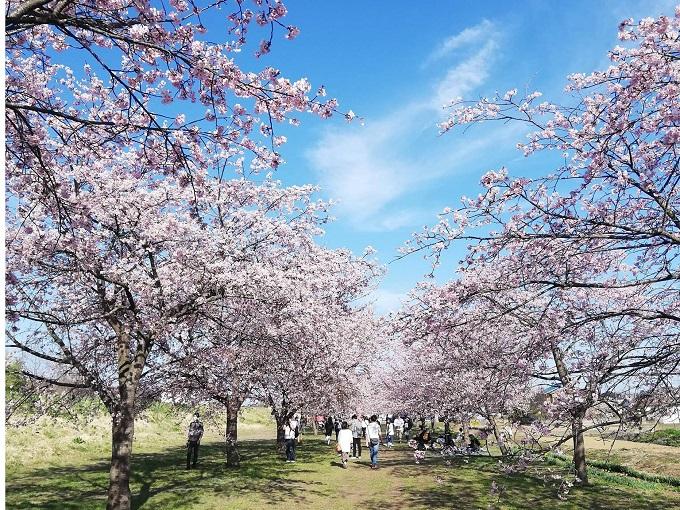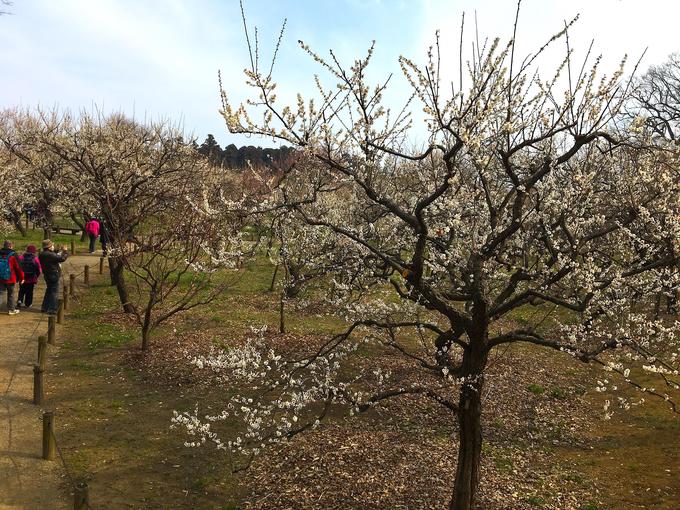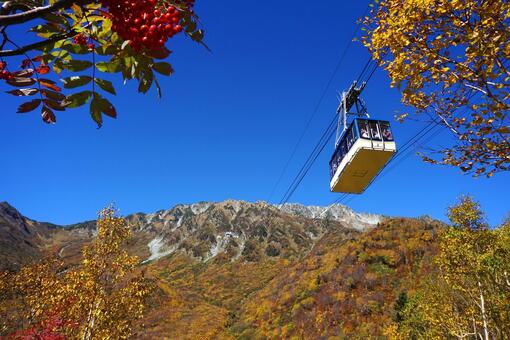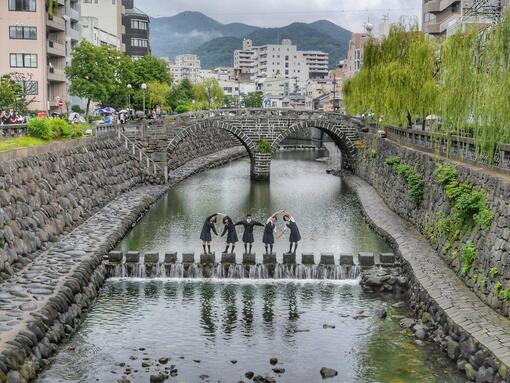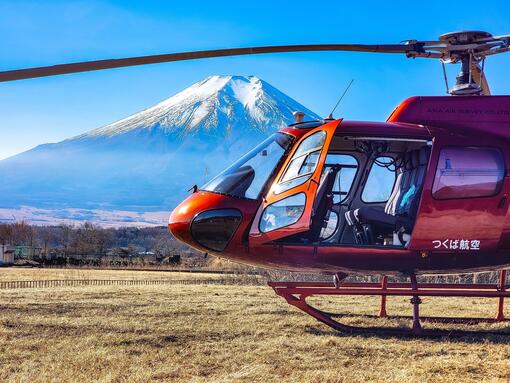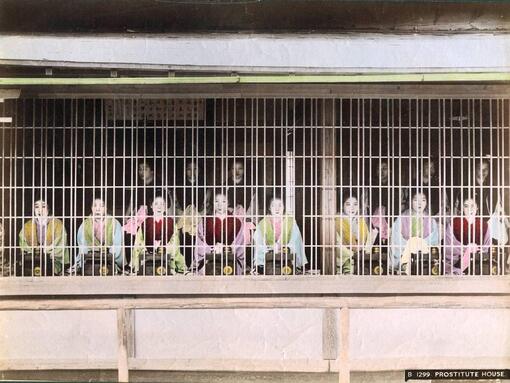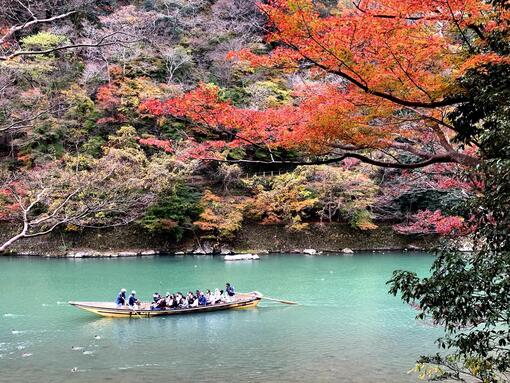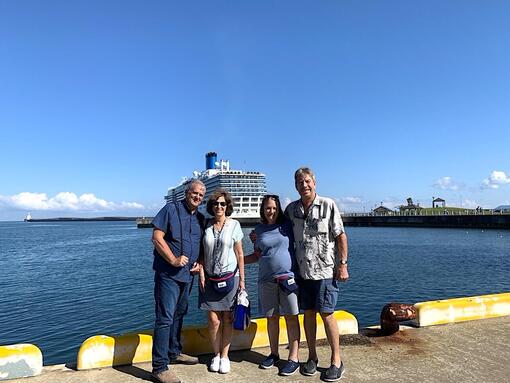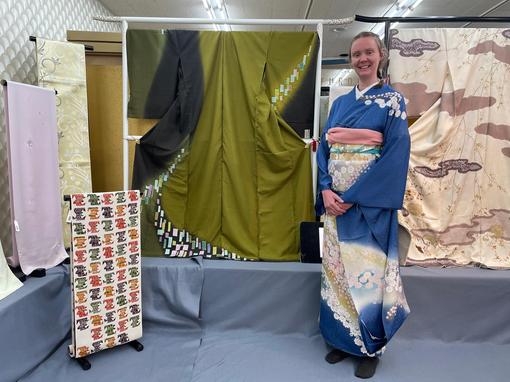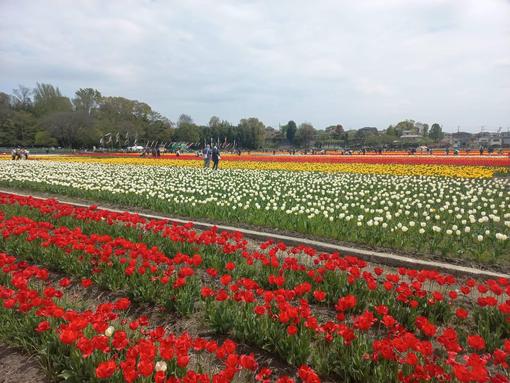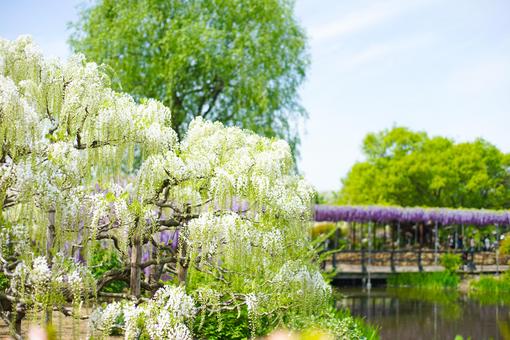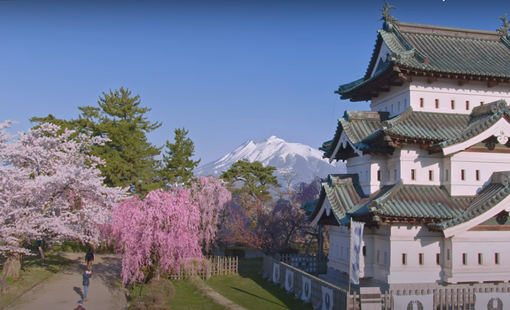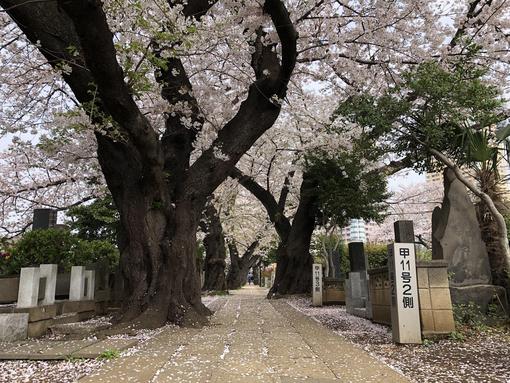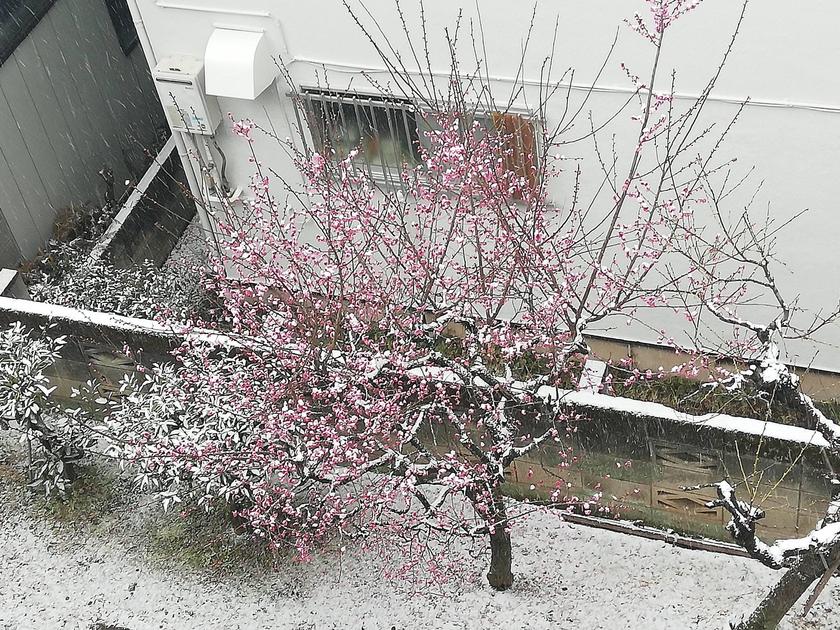
Where to see Early Sakura Near Tokyo
This Winter is said to be a particularly cold, icy and snowy one. The nights will be long, the trees bare and the days chilly, so we will all be dreaming of Spring and the cherry blossoms that come with it. While the regular cherry blossoms bloom at the end of March, there are other flowers that bloom much earlier and give us our first taste of Spring. This article will introduce several places you can see early blossoms in near Tokyo.
Early sakura (Kawazu Sakura):
The early blooming cherry blossoms are named "kawazu sakura" after the town of Kawazu, famous for their blossom lined river in February. Luckily, Kawazu is in Izu, very close to Tokyo, and can be done in a day trip.
The blossom trees line the Kawazu River for over 4km, making it a very popular spot. The further you walk, the fewer people there will be. There are lots of food stalls and performances, and even a night illumination event. While in Kawazu it's good to take a bus to the mountainous area above Kawazu where you can see the "Seven Waterfalls of Kawazu".
Access: Take the Izukyu Railway Line to Kawazu Station and walk from there. (Google Maps)
In mid-February, head to Matsuda station and walk about 10 minutes to Mt. Matsuda, a small mountain which will be covered in early pink kawazu sakura trees and yellow rapeseed flowers. The town is is known for mandarins (mikans) so be sure to stock up. You can buy them freshly picked from the mountain itself. The highlight and real draw of this spot is that silhouetted behind the cherry trees sits Mt. Fuji in all its glory. Seeing the snow-capped Fuji adorned with pink blossoms is a wonderful sight. The main festival takes place at the base of the hill, but if you walk up the hill for about 10 minutes, you will come to a paid garden, where you can walk amongst rapeseed flowers, sakura and mandarin trees. The sun shines on this garden and it's such a peaceful experience to sit down and bask in the sun and views. For kids there are slides and a little train ride to keep them entertained.
Access: Take the Odakyu Odawara Line to Shin-Matsuda Station and follow the decorations. (Google Maps)
Note: Those in wheelchairs or with strollers can access the bottom of the park but will have difficulty getting up the steep hill to the top section.
Minami-Izu, similar to Kawazu is a small town in Southern Izu with a river running through it. In February, the sakura trees lining the river are all blooming bright pink, making February the ideal time for a trip. Minami-Izu is much quieter than Kawazu, meaning you can stroll more peacefully beneath the trees. It's a bit more difficult to reach without a car, but you can catch a bus bound for Shimogamo from Shimoda Station (get off at Kujobashi). If you have a car, head to Road Station Shimogamo Onsen Yunohana. There are several famous rapeseed flower fields around Minami-Izu which you should be sure to check out. While walking along the river, you will see a very run-down looking greenhouse. It is a tropical conservatory with a large collection of exotic plants and is somewhat like making your way through a maze, with plants growing almost wild everywhere. Best of all, it's free!
Access: Take a bus from bus stop #3 at Shimoda Station to Michi-no-Eki Shimogamo Onsen Yunohana (25 minutes). (Google Maps)
The Miura Peninsula is lovely on a regular day, with its sparkling blue sea and rocky cliffs. In February it becomes even more beautiful. Get off the train at Miura Kaigan Station and walk about 1km to Komatsugaike Park. Blossoms line the street as you walk, and capturing a picture of the train passing with the sakura in the background is a popular thing to do. At the park you can picnic amongst the 1000 sakura trees. Nearby is Miura Beach if you fancy breathing in some ocean air, and be sure to try the local tuna if you like sushi - it's said to be exceptional.
Access: Take the Keikyu Kurihama Line to Miurakaigan or Misakiguchi Station and walk 1km from there (follow the decorations). (Google Maps)
Kita Asaba Sakurazutsumi Park in Sakado is home to a 1.2 km stretch of early kanzakura trees. The trees make a "tunnel of cherry blossoms" and are surrounded by green grass you can picnic or play on. Follow the tunnel and it will lead you to the riverside. This sakura blooms early-mid March, so a little later than the kawazu sakura, but earlier than the regular someiyoshino sakura. There are no facilities or places to eat in this park, so you should bring your own snacks or picnic.
Access: Take the free shuttle bus from Kita Sakado Station on the Tobu Tojo Line (Weekends and holidays only, once every 40 minutes) (Google Maps)
Asahina River in Okabe, Fujieda
If you have a car, you can visit this relatively unknown spot in Yaizu. The cherry blossoms run alongside the Asahina River, between Katanokami and Sekigata. This is a very rural, quiet area where you will have the river on one side and countryside farms on the other. While in the area, you could also visit the Yaizu fish maket or Yoshida Park, or drive even further to Yoshida. If you want to come by train, get off at Yaizu station and take a taxi or walk. The Asahina River is famous for the production of "Asahina Gyokuro" green tea so you could drive around to take a look at some of the plantations.
Access: Drive (Google Maps)
While sakura is generally more celebrated, plums emit a sweet smelling scent and are in some ways more alluring due to the fact that they bloom earlier and are the true symbol of Spring coming.
Kairakuen is known as one of the "three best gardens in Japan" and is especially famous for plums, so it has to be on this list. It is located in Mito and can be reached directly via the JR Joban Line during plum season. The garden houses an enormous plum grove of over 3000 trees in 100 different varieties. You can stroll around and enjoy the first signs of Spring.
Access: Take the JR Joban Line to Kairakuen Station (plum festival peak only), or take a bus or walk from Mito Station. (Google Maps)
In the Kogesawa Plum Grove grow 1400 plum trees. These plums bloom throughout March and can be reached by bus from Takao Station's north exit (take the bus for Kobotoke). The trees grow on a sloping hillside with a path winding between the rows of trees, allowing people to walk through the flowers. You only need about 30 minutes to see them all, but there are six other plum groves in the Takao area - Sekisho, Tenjin, Arai, Yunohama and Kobotoke. You could visit them all!
Access: Take a bus for Kobotoke from Takao Station North Exit (Google Maps)
Ogose town is known for plum blossoms. In late Winter you can see plum trees blooming all over town. Ogose Bairin has about 1000 plum trees, some over 200 years old. On weekends, a mini steam locomotive runs for children. There are also stalls and live music performances.
Access: Take the Tobu Tojo Line from Ikebukuro and change to the Ogose Line at Sakado, then stop at Ogose. (Google Maps)
The Soga Plum Forest is considered one of the 50 best landscapes in Kanagawa Prefecture. Over 35,000 plum trees are planted there, and every year when they bloom the Odawara Plum Festival is held with food stalls and events galore. You can see Mt. Fuji from this park, so do try and take some photos of the plums with Fujisan as a backdrop.
Access: Take the Gotenba Line to Shimo-soga Station (Google Maps)
Almost 200 years old, Atami Plum Garden houses 472 plum trees. They blossom early, throughout January. Of course you can combine a trip to this garden with the onsen town of Atami. Also in Izu are the Izu Tsukigase Plum Park and the Shuzenji Plum Park. If you rent a car you can easily visit them all. Shuzenji was very quiet and peaceful when we visited it this year in combination with Minami-Izu sakura.
Access: Take the JR Ito Line from Atami to Kinomiya and walk for 10 minutes. (Google Maps)
Nagatoro area in Saitama is famous for its rivers and water sports. It is also home to Mt. Hodo. Atop the mountain sits a plum blossom grove of over 500 trees. Every year a plum festival is held there around the end of February. You can often see the yellow wintersweet blossoms at the same time. To reach the plum grove you can take a cablecar, or you can hike about an hour up the mountain.
I hope this list provides some inspiration for your late Winter trips. Enjoy the snow in December and January and by February we'll be ready for some warmth - then these beautiful delicate blossoms will warm our hearts an invoke a feeling of hope and readiness to greet the Spring.
Access: Take a shuttle bus from Nagatoro Station or walk 20 minutes. (Google Maps)












